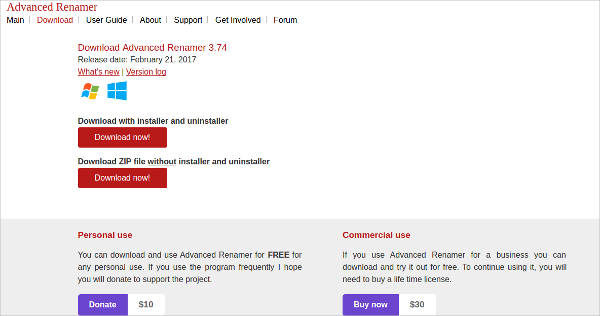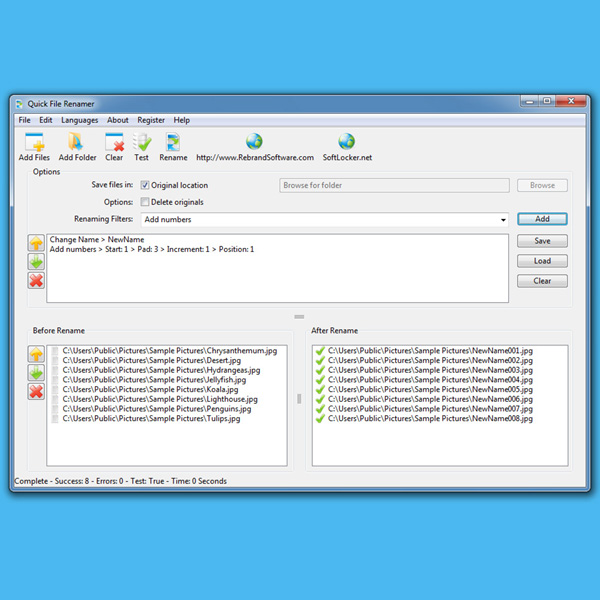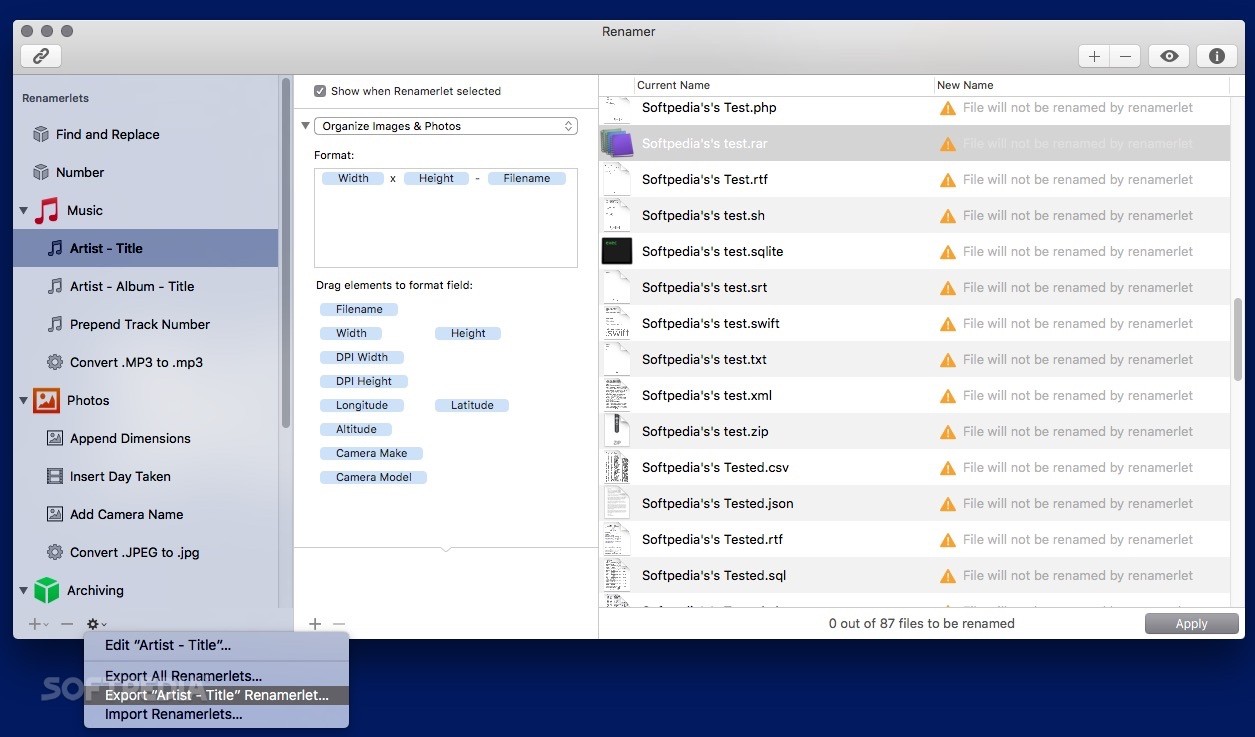
#Advanced renamer for mac for free
Since I already have SetApp subscription, using Renamer for free is easy and saves quite a lot of time. I use Gemini 2 and Commander One to manage and organize the files (photos, music, and documents) on the different drives. A couple of renaming apps often offer advanced features that you’ll end up using, like once a year, maybe. While organizing data across folders and drives, the biggest challenge is to deal with the file names. Honestly, that is a way better deal than buying a single and equally expensive app with similar or advanced features. However, it would be a better option to pay $9.99 for the monthly SetApp subscription to enjoy a free access to over 190 apps for macOS and iOS for that price.
#Advanced renamer for mac mac
The Mac App Store offers several alternatives at a similar price. Well, you will have to shell out $19.99 to buy a single user license. It also offers you an option to Find and Replace the names of the files on the selected storage system. The Renamer app is so convenient for re-organizing your photo collections, music, and other files. This app takes away the cake by showing you the new file names alongside the previous names. Step 3: Once you’ve dropped all the files and confirmed the new renaming scheme, hit Apply. Step 2: To start, you can drag and drop all the files you wish to rename in the Renamer app’s window.Īlternatively, you can use the built-in options to specify the naming scheme you what to follow for the files.
#Advanced renamer for mac how to
Here’s how to rename files quickly using this app. Let’s check out another option to batch rename several files using the Renamer app. Using Renamer App to Batch Rename Several Files on Mac However, it takes a while to pick the right options, and you have to do it all the time in the different folders without employing any smart folder management app. Just hit Command+Z on the keyboard.įinder offers quite a basic option to rename files in a back and gets the job done. Hit Rename.ĭon’t worry if you’ve made a mistake or want to edit the name. Step 6: Check the Rename Finder Items window carefully to ensure you’ve chosen and assigned the appropriate values. For that, use the Where drop-down and pick after name or before a name. Here, if you plan to assign custom value, you’ll have to pick the location where you want the value to appear – before or after. The window will show a small preview of how the file name will appear under the Custom Format box. For this guide, I used Rename Multiple Files in the box. Step 5: Next to the Custom Format is where you need to assign the exact text that you are planning to add to the images. You can pick ‘Add Text’ or ‘Replace Text’ option, but the latter has been quite tricky, especially when you’re trying to rename songs or documents. If you plan to assign a date, then pick ‘Name and Date’, or the ‘Name and Counter’ to add numbers after the name. Step 4: From the Name Format under it, select ‘Name and Index’ option.


Step 3: In the Rename Finder Items window that pops up, use the first drop-down to pick Format. Note: From macOS 11 Big Sur onwards, the Rename XX Items (the xx is the number of files selected) will appear as Rename. Step 2: With the source files selected, right-click on them and select Rename from the contextual menu. Alternatively, you can hold down the Shift key and choose the files using the mouse. Step 1: Hold down the Shift key and select multiple files one by one. Batch Rename Multiple Files at Once Using Finder on Mac

Note: We tested these solutions on macOS 11 Big Sur beta 6, and everything worked fine. Let’s start with the cumbersome native method. Here are the two methods you can follow to batch rename several files at once on your Mac.

Apple advices you against renaming any system folders for they might cause the apps to malfunction.


 0 kommentar(er)
0 kommentar(er)
